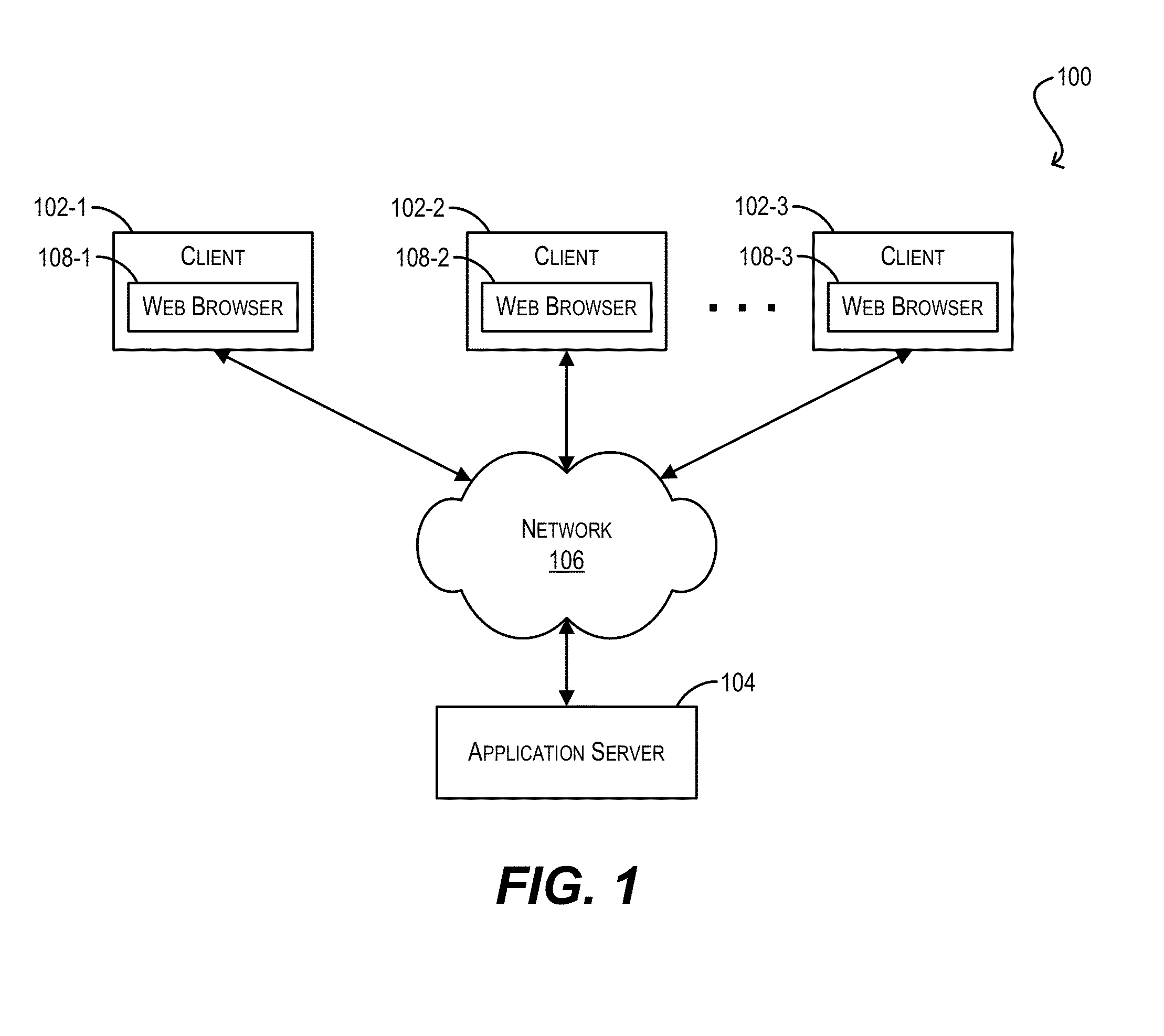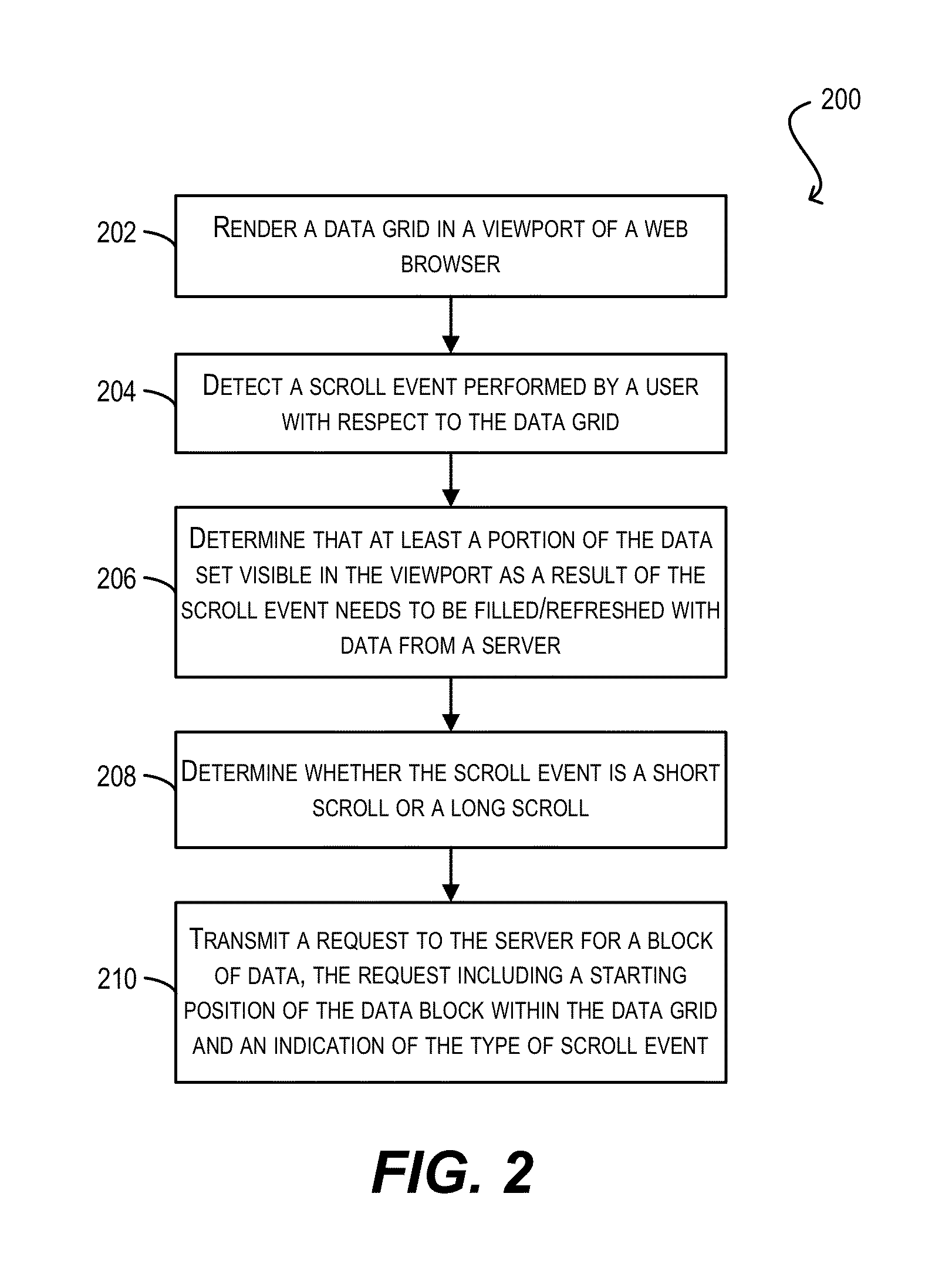Eager block fetching for web-based data grids
a data grid and web-based technology, applied in interprogram communication, multi-programming arrangements, instruments, etc., can solve the problems of large data set size that cannot be viewed, single block size is generally not optimal for all types of scroll events, etc., to optimize the scrolling performance of the data grid, optimize the amount of data, and optimize the effect of scrolling performan
- Summary
- Abstract
- Description
- Claims
- Application Information
AI Technical Summary
Benefits of technology
Problems solved by technology
Method used
Image
Examples
Embodiment Construction
[0033]In the following description, numerous details are set forth in order to provide an understanding of embodiments of the present invention. It will be apparent, however, to one of ordinary skill in the art that certain embodiments can be practiced without some of these details.
[0034]Embodiments of the present invention provide techniques for optimizing scrolling performance in a web-based data grid. In one set of embodiments, when a user scrolls through a data grid rendered in a viewport of the user's web browser, client-side code executing in the web browser can detect whether a scroll event has occurred that requires a portion of the viewport to be filled / refreshed with data from a server. The client-side code can further determine whether the scroll event is a short scroll or a long scroll, and can send a data request to the server that indicates the type of scroll event. If the scroll event is a short scroll, the server can determine a first amount of data to fetch based on...
PUM
 Login to View More
Login to View More Abstract
Description
Claims
Application Information
 Login to View More
Login to View More - R&D
- Intellectual Property
- Life Sciences
- Materials
- Tech Scout
- Unparalleled Data Quality
- Higher Quality Content
- 60% Fewer Hallucinations
Browse by: Latest US Patents, China's latest patents, Technical Efficacy Thesaurus, Application Domain, Technology Topic, Popular Technical Reports.
© 2025 PatSnap. All rights reserved.Legal|Privacy policy|Modern Slavery Act Transparency Statement|Sitemap|About US| Contact US: help@patsnap.com



